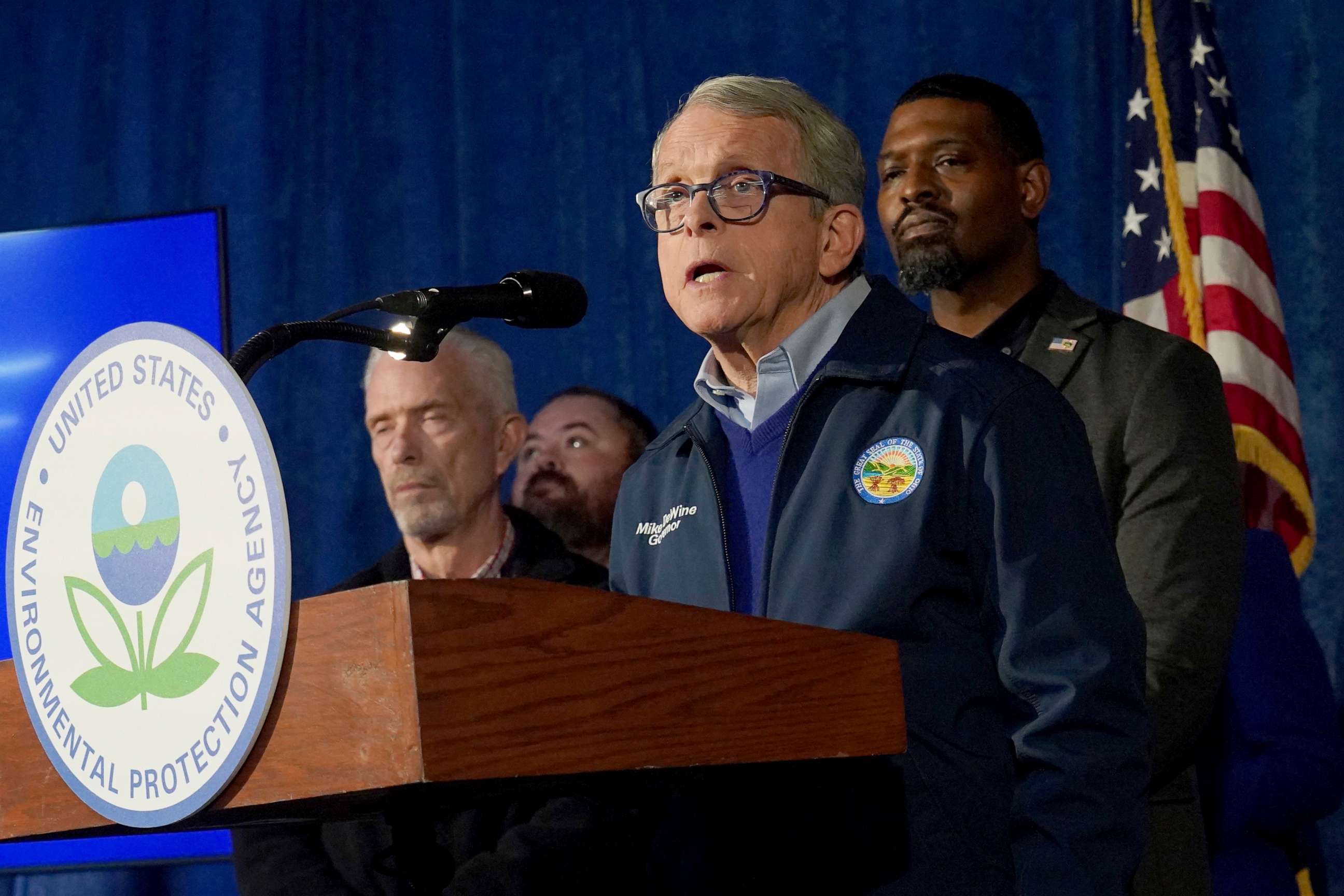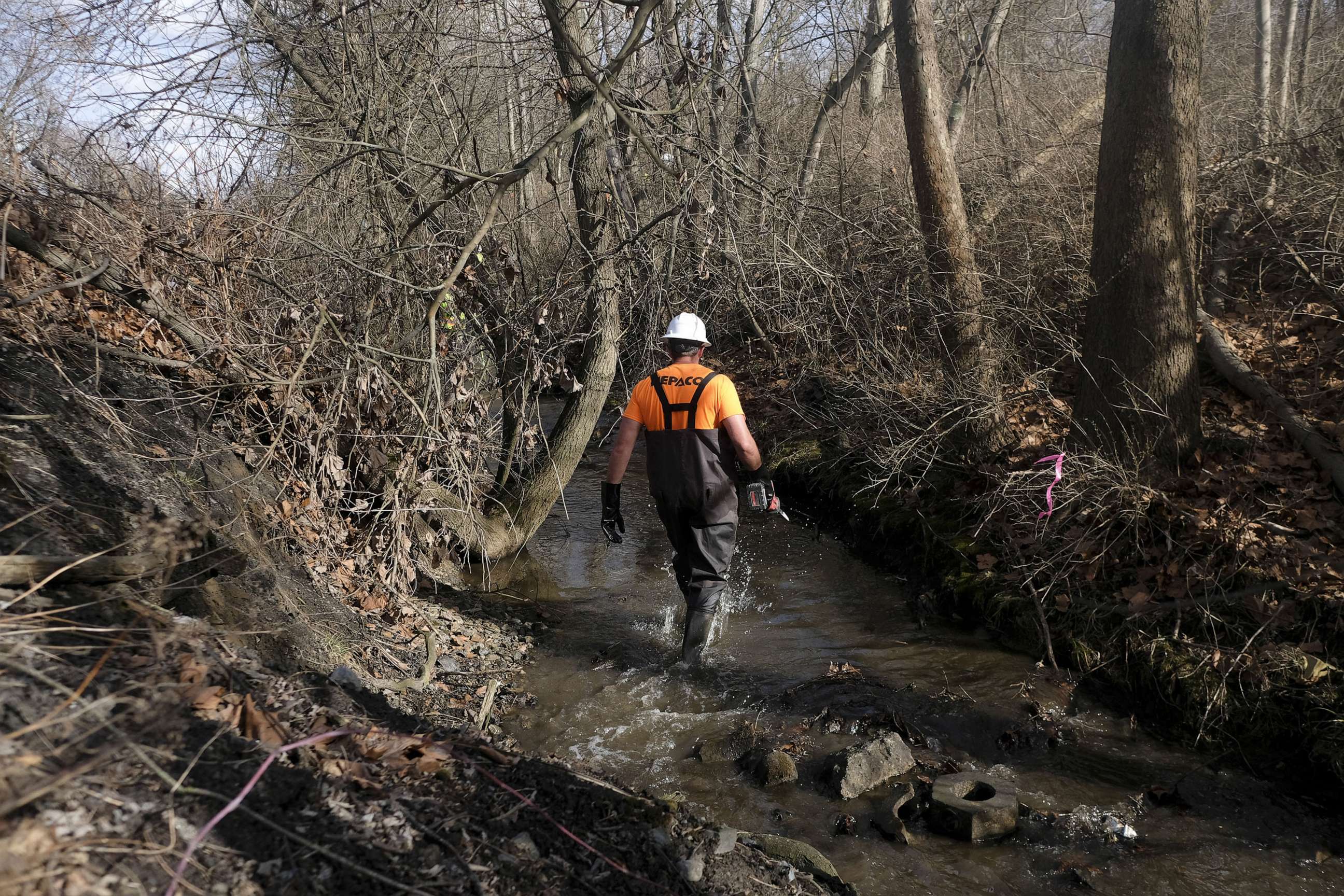Ohio governor visits train derailment site as track removal set to begin
Hazardous waste may be hiding under the train tracks at the derailment site.
Ohio Gov. Mike DeWine and his wife, Fran DeWine, are visiting the train derailment site in East Palestine to get an update on the hazardous waste removal from the area.
Track removal is set to begin as soon as Wednesday, nearly four weeks after the train derailed and released several toxic chemicals -- including vinyl chloride, ethyl acrylate and isobutylene -- into the environment, according to an update from the governor's office.
Officials from both the state and federal Environmental Protection Agency are "finalizing the process that Norfolk Southern will use to ensure the safe, complete, and effective cleanup of the hazardous waste under the train tracks at the derailment site," the office said.
The DeWines will also be visiting Sulphur Run and Leslie Run, two waterways that were contaminated from the accident, to get an update on surface water testing and sediment washing.
Last week, Norfolk Southern's CEO Alan Shaw elaborated that the company would be "temporarily" removing the tracks, beginning in early March, so it could excavate and remove the remaining contaminated soil.

The track removal is a change from Norfolk Southern's original plan, which did not include tearing up the tracks.
Shaw last week said the original plan "would have effectively and safely remediated the soil under our tracks," but after vehement concern and pressure from East Palestine residents, the company changed its strategy.
Meanwhile, the Agency for Toxic Substances and Disease Registry, part of the Centers for Disease Control and Prevention, announced Tuesday it is planning on conducting door-to-door chemical exposure surveys in East Palestine to get "critical feedback" from first responders involved in the derailment.
Additionally, regional EPA Administrator Debra Shore lauded the agency's new mobile lab that collects real-time air monitoring and sampling analysis during the waste removal and cleanup phase.
"This means we don't have to send samples away for analysis -- we can analyze them right here in the bus, as we collect them, and provide the results very quickly," Shore said at a news briefing Tuesday.
The bus will be able to drive around town for those rapid air quality spot checks, she added.
Shore was asked repeatedly whether the cleanup and recovery response will include testing for dioxins, a group of toxic chemical compounds.
The burning of vinyl chloride can release dioxins into the air. According to the EPA, dioxins are known as persistent organic pollutants, meaning once they are released into the environment, they take a long time to break down.

If they are ingested, they take a long time to break down in the body because they are absorbed by fat tissue.
Dioxins are very dangerous and can cause a number of health issues including damage to the immune system, reproductive and developmental problems, hormone interference and even cancer.
Teams tested for dioxins immediately after the controlled burn but did not find high levels of the compounds, Shore said.
"There's a whole suite of chemicals that they can test for," Shore said. "We did -- specifically after the vent and burn, look for the primary byproducts of the burning of vinyl chloride, which are phosgene and hydrogen chloride."
She continued, "Dioxin is a secondary byproduct. We didn't find elevated levels of those primary byproducts. Which suggested to our scientists that there was not a further risk of dioxin exposure."
Severe weather has also been impacting clean up efforts. Heavy rains Monday caused "minor damage" to some of the containment, collection and stream treatment systems, DeWine's office said in a statement Tuesday evening.
The damage may have caused a "small amount" of contaminants from Sulpher Run to enter Leslie Run, Ohio's EPA said, but that those contaminants were heavily diluted.
A spokesperson for Norfolk Southern told ABC News the rain caused "very minor issues" with the cleanup effort and that it was "fixed within a matter of hours." Those issues were not at the "core derailment site," the spokesperson said.

The downpour also rapidly filled the storage bins that hold the contaminated liquid on site.
Norfolk Southern reported those bins are now roughly 90% full due to the recent rain, according to DeWine's update.
A "bulk transfer method" will now be used for this excess of contaminated liquid caused by the rain, which was approved by the federal and state authorities overseeing the cleanup, the update said.




